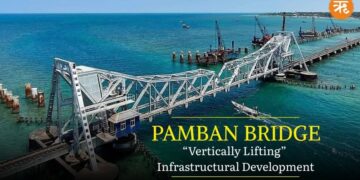Nawab Siraj-ud-Daulah’s Assassination and the Rise of British Rule in India*
*Assassination of Nawab Siraj-ud-Daulah and the Rise of British Rule*
On July 2, 1757, Nawab Siraj-ud-Daulah was assassinated, marking a turning point in Indian history. The Battle of Plassey on June 23, 1757, saw the British East India Company, led by Robert Clive, defeat Siraj-ud-Daulah’s forces. Betrayed by his commander, Mir Jafar, who had secretly allied with Clive, Siraj-ud-Daulah was arrested and murdered. Following this, the British made Mir Jafar the Nawab, and the British East India Company assumed political control over Bengal, significantly altering the course of Indian history.
Nawab Siraj-ud-Daulah was assassinated on July 2, 1757
– He was betrayed by his commander Mir Jafar
– The foundation of the British Empire was laid in BengalAfter the assassination of Nawab Siraj-ud-Daulah,
*Subhash Chandra Bose’s Arrest and the Fight for Indian Independence*
On July 2, 1940, Subhash Chandra Bose was arrested by the British government in Calcutta on charges of treason due to his revolutionary activities against British rule. A prominent leader of the Indian freedom struggle, Bose’s arrest led to his imprisonment, where he embarked on a hunger strike that severely impacted his health. Alarmed, the British government released him and sent him home. Notably, Bose was imprisoned about 11 times during his lifetime. Determined to continue the fight for independence, he later escaped British surveillance, forming the Azad Hind Fauj (Indian National Army) on October 21, 1943, with support from Germany and Japan. This army played a crucial role in India’s quest for freedom.
On July 2, 1940, Subhash Chandra Bose was arrested by the British government
– He was arrested on charges of treason
– Netaji was arrested and imprisoned about 11 times in his lifetime
He was the founder of Azad Hind Fauj
*Asit Ranjan Bhattacharya: A Martyr of the Indian Freedom Struggle*
On July 2, 1934, Asit Ranjan Bhattacharya, a prominent revolutionary, was martyred. A dedicated member of the Indian National Congress, Bhattacharya actively fought against British rule. On March 31, 1933, he led a daring robbery in Habibganj to reclaim wealth for the Indian people and fund revolutionary activities. During this operation, he killed British guards but was subsequently arrested and sentenced to death. On July 2, 1934, Bhattacharya was hanged in Sylhet Jail. His bravery and sacrifice continued to inspire future freedom fighters in India’s struggle for independence.
Asit Ranjan Bhattacharya was martyred on July 2, 1934
– He was a prominent revolutionary during the Indian freedom struggle
– He had led many movements against British rule
*Samuel Hahnemann: Founder of Homeopathy*
On July 2, 1843, Christian Friedrich Samuel Hahnemann, the German physician who founded homeopathy, passed away. Hahnemann made significant contributions to medical science, developing homeopathy as an alternative medical system. He introduced the principle of ‘Similia Similibus Curantur’ ” which means that diseases can be treated with substances that produce similar symptoms in healthy individuals. The term “homeopathy” was first used by Hahnemann in his 1807 essay, “Indication of the Homeopathic Employment of Medicine in Ordinary Practice,” published in Hufeland’s journal. Throughout his life, Hahnemann practiced, researched, wrote, and lectured extensively on homeopathy. He died in Paris at the age of 88, leaving a lasting legacy in the field of alternative medicine.
Christian Friedrich Samuel Hahnemann died on July 2, 1843
– He founded homeopathy
– He was a German physician
Throughout his life, Hahnemann practiced, researched, wrote, and lectured extensively on homeopathy
*Chhatrapati Shivaji Maharaj Terminus: A UNESCO World Heritage Site*
On July 2, 2004, Chhatrapati Shivaji Maharaj Terminus (CSMT) in Mumbai was declared a World Heritage Site by UNESCO. Built in the Victorian Gothic style, this historic railway station was originally named Victoria Terminus. Designed by British architect Frederick William Stevens, the station was completed on June 20, 1887, to commemorate Queen Victoria’s Golden Jubilee. The construction took around ten years and cost 16 lakhs. Before CSMT, Mumbai’s main station was Bori Bunder, from which India’s first train to Thane departed. Due to space constraints at Bori Bunder, the British constructed Victoria Terminus, later renamed Chhatrapati Shivaji Maharaj Terminus in 1996. Today, CSMT serves about 30 lakh passengers daily, with 18 platforms, seven of which are dedicated to local trains.
Chhatrapati Shivaji Maharaj Terminus was declared a World Heritage Site on 2 July 2004
– The building of this station is built in Victorian Gothic style
– This station is a historic railway station located in Mumbai
















Comments